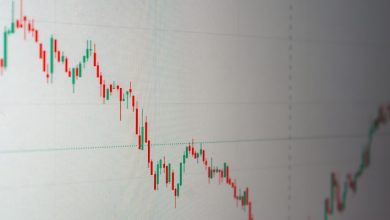Understanding the Volatility of Cryptocurrency Markets

- Exploring the Factors Influencing Cryptocurrency Price Fluctuations
- Analyzing the Impact of Market Sentiment on Cryptocurrency Volatility
- The Role of Regulatory News in Shaping Cryptocurrency Market Volatility
- Strategies for Managing Risk in the Highly Volatile Cryptocurrency Market
- Comparing Volatility Levels Across Different Cryptocurrencies
- Predicting Future Trends in Cryptocurrency Volatility
Exploring the Factors Influencing Cryptocurrency Price Fluctuations
Cryptocurrency price fluctuations are influenced by a variety of factors that can impact the market in different ways. Understanding these factors is crucial for investors and traders looking to navigate the volatile cryptocurrency markets effectively. Some of the key factors influencing cryptocurrency price fluctuations include:
- Market Demand: The level of demand for a particular cryptocurrency can have a significant impact on its price. When demand is high, prices tend to rise, while low demand can lead to price drops.
- Market Sentiment: Investor sentiment plays a crucial role in determining cryptocurrency prices. Positive news and developments can drive prices up, while negative news can lead to price declines.
- Regulatory Environment: Regulations imposed by governments and regulatory bodies can also impact cryptocurrency prices. Uncertainty or strict regulations can lead to price volatility.
- Market Manipulation: Cryptocurrency markets are susceptible to manipulation by large players or “whales” who can influence prices through large trades or coordinated efforts.
- Technological Developments: Advances in blockchain technology or changes to a cryptocurrency’s underlying technology can also affect its price. Upgrades or new features can drive prices up, while security breaches or technical issues can lead to price drops.
By considering these factors and staying informed about market trends, investors can make more informed decisions when trading cryptocurrencies. It is essential to conduct thorough research and stay updated on the latest news and developments in the cryptocurrency space to navigate the volatile markets successfully.
Analyzing the Impact of Market Sentiment on Cryptocurrency Volatility
When it comes to understanding the volatility of cryptocurrency markets, analyzing the impact of market sentiment is crucial. Market sentiment refers to the overall feeling or attitude of traders and investors towards a particular cryptocurrency. This sentiment can be influenced by a variety of factors, including news, social media, and market trends.
Market sentiment plays a significant role in determining the volatility of cryptocurrency prices. Positive sentiment can lead to increased buying activity, driving prices up, while negative sentiment can result in selling pressure and price declines. Understanding how market sentiment affects cryptocurrency volatility can help traders and investors make more informed decisions.
By monitoring market sentiment indicators such as social media mentions, news sentiment, and sentiment analysis tools, traders can gain valuable insights into the market’s mood. This information can be used to anticipate potential price movements and adjust trading strategies accordingly. Additionally, sentiment analysis can help identify market trends and patterns that may impact cryptocurrency prices in the future.
The Role of Regulatory News in Shaping Cryptocurrency Market Volatility
Regulatory news plays a crucial role in influencing the volatility of cryptocurrency markets. When government agencies or regulatory bodies announce new policies or regulations related to cryptocurrencies, it can have a significant impact on market sentiment and prices. Investors often react swiftly to such news, leading to sudden price fluctuations and increased volatility in the market.
For example, when a country announces a ban on cryptocurrency trading or imposes restrictions on exchanges, it can cause panic among investors, leading to a sell-off and a sharp decline in prices. On the other hand, positive regulatory news, such as the approval of a new cryptocurrency exchange or the introduction of regulations to protect investors, can boost confidence in the market and drive prices higher.
It is essential for cryptocurrency traders and investors to stay informed about regulatory developments around the world to anticipate potential market movements. By keeping a close eye on regulatory news and understanding its implications, market participants can make more informed decisions and better manage their risk exposure in the volatile cryptocurrency market.
Strategies for Managing Risk in the Highly Volatile Cryptocurrency Market
When dealing with the highly volatile cryptocurrency market, it is crucial to have strategies in place to manage the associated risks effectively. Here are some tips to help you navigate this unpredictable landscape:
- Diversification: One of the most effective ways to mitigate risk in the cryptocurrency market is to diversify your investment portfolio. By spreading your investments across different cryptocurrencies, you can reduce the impact of volatility on your overall holdings.
- Stop-loss orders: Implementing stop-loss orders can help you limit your losses in case the market takes a sudden downturn. This automated strategy allows you to set a price at which your assets will be sold, helping you avoid significant losses.
- Stay Informed: Keeping up to date with the latest news and developments in the cryptocurrency market is essential for making informed decisions. By staying informed, you can anticipate market trends and adjust your strategies accordingly.
- Use Risk Management Tools: Utilize risk management tools such as options and futures contracts to hedge your positions and protect your investments from market fluctuations. These tools can help you minimize potential losses while still allowing you to benefit from market opportunities.
- Set Realistic Goals: Establishing realistic goals and sticking to your investment plan can help you avoid making impulsive decisions based on market volatility. By setting clear objectives, you can stay focused on your long-term strategy and avoid succumbing to emotional trading.
By incorporating these strategies into your approach to the cryptocurrency market, you can better manage the inherent risks and increase your chances of success in this highly volatile environment.
Comparing Volatility Levels Across Different Cryptocurrencies
Cryptocurrency markets exhibit varying levels of volatility, which can impact trading strategies and risk management. It is essential to compare the volatility levels across different cryptocurrencies to make informed decisions when investing or trading in the digital asset space.
When comparing the volatility of cryptocurrencies, it is crucial to consider factors such as market capitalization, trading volume, and price fluctuations. Some cryptocurrencies may experience higher volatility due to their smaller market capitalization and lower trading volume, making them more susceptible to price swings.
On the other hand, larger cryptocurrencies with higher market capitalization and trading volume may exhibit lower volatility levels, providing a more stable investment option for traders and investors. By analyzing the volatility levels of different cryptocurrencies, market participants can identify opportunities for profit and mitigate risks associated with price fluctuations.
It is important to note that volatility in cryptocurrency markets can be influenced by external factors such as regulatory developments, market sentiment, and macroeconomic trends. Traders and investors should stay informed about these factors to anticipate potential changes in volatility levels and adjust their strategies accordingly.
In conclusion, understanding and comparing volatility levels across different cryptocurrencies is essential for navigating the dynamic and fast-paced cryptocurrency markets. By analyzing market data and staying informed about external factors, traders and investors can make well-informed decisions to optimize their investment returns and manage risks effectively.
Predicting Future Trends in Cryptocurrency Volatility
Cryptocurrency volatility is a key factor that influences the behavior of investors in the market. Understanding and predicting future trends in cryptocurrency volatility can provide valuable insights for traders and analysts. By analyzing historical data and market trends, experts can identify patterns that may indicate potential changes in volatility levels.
One approach to predicting future trends in cryptocurrency volatility is through the use of technical analysis. This method involves studying price charts and using mathematical indicators to forecast potential price movements. Traders can use tools such as moving averages, Bollinger Bands, and Relative Strength Index (RSI) to identify patterns that may signal changes in volatility.
Another method for predicting future trends in cryptocurrency volatility is through fundamental analysis. This approach involves evaluating the underlying factors that may impact the value of a cryptocurrency, such as regulatory developments, technological advancements, and market sentiment. By staying informed about these factors, traders can make more informed decisions about the potential direction of volatility.
It is important to note that predicting future trends in cryptocurrency volatility is not an exact science. The market is influenced by a wide range of factors, and unexpected events can lead to sudden changes in volatility levels. Traders should use a combination of technical and fundamental analysis, along with risk management strategies, to navigate the volatile cryptocurrency market successfully. By staying informed and adapting to changing market conditions, traders can position themselves to take advantage of opportunities and mitigate risks in the ever-evolving world of cryptocurrency trading.



